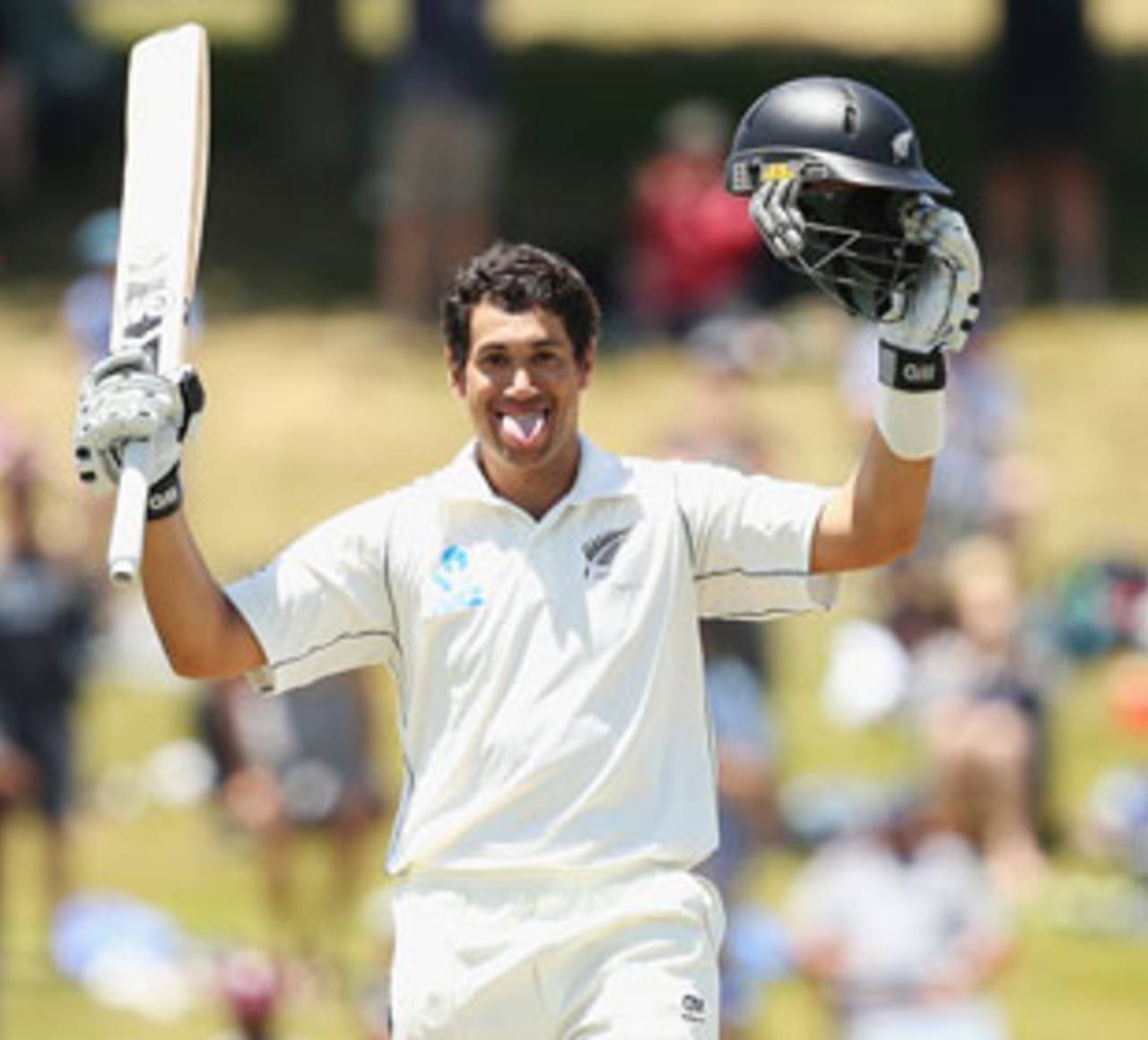New Zealand's performance in the three-Test series against West Indies illustrated the value of a "core four", who, with support from their team-mates, can reignite the country's prowess in the longer format.
The 2-0 series win is difficult to place into context given the calibre of a West Indies side missing Chris Gayle and a host of bowling options, one of whom, Shane Shillingford, was banned for an illegal action during the series.
However,
Ross Taylor,
Trent Boult,
Tim Southee and
Kane Williamson demonstrated New Zealand's capabilities. At the very least, it has heightened anticipation for February's series against India, given India's parity against South Africa in their Johannesburg draw.
The reassuring thud of Taylor's bat against West Indian deliveries will be the series' abiding memory.
He became the second New Zealand player to score centuries in three consecutive Tests. Mark Burgess is the only other to achieve the feat. Burgess did it over 27 months (November 1969-February 1972) against three countries (Pakistan, England, West Indies); Taylor achieved the feat in 19 days against one and finished with a series average of 247.50.
Taylor achieved a scroll of statistical accolades. His average of 47.51 is the country's best for those who have played more than 20 innings. He joined Nathan Astle on 11 Test centuries with only Martin Crowe (17) and John Wright (12) ahead of him. His 495 runs are the second-most by a New Zealand batsman in a three-Test series (Andrew Jones made 513 against Sri Lanka in 1991). Taylor's 866 runs in a calendar year (from 16 innings at an average of 72.16) are the second-most by a New Zealand batsman (John R Reid made 871 across 24 innings in 1965).
His consistency enabled New Zealand to negotiate a green pitch in Wellington and repel the troublesome spin of Sunil Narine in Hamilton. Add his highest Test score (217 not out) in Dunedin and seven slips catches; it represents the best series of his career.
Williamson missed the opening Test due to a hand injury but completed innings of 45, 58 and 56 on return. Add 114, 74 and 62 from the series in Bangladesh and you have 409 runs at an 81.80 average since his productive county stint with Yorkshire.
He anchored the final innings chase for 122 with surety of footwork and a high left elbow in defence. It minimised anxious moments for New Zealand fans.
Boult and Southee headed the bowling operation. Evidence suggests the pair is capable of scything through talented batting line-ups. India - particularly Virat Kohli, Cheteshwar Pujara and Rohit Sharma - could provide their steepest test. Throw in green tracks and it will be an absorbing contest.
Boult's 20 wickets at 15.40 and Southee's 18 wickets at 18.11 in this series showed they have taken up the mantle of Chris Martin. Boult's swing, movement, pace and accuracy, including his 10-wicket bag in Wellington, meant the 24-year-old rocketed into third for wickets taken this year (46 in 12 Tests) behind Stuart Broad (59) and James Anderson (48) who have played one more Test.
Southee completed the year as the 12th New Zealand player to take 100 Test wickets. He took three wickets in his final over to finish with a tally of 101.
Like in the 1980s era, with Sir Richard Hadlee and Martin Crowe, the core four need backing. It was present against West Indies but becomes paramount with the arrival of India, the world's second-ranked Test side.
How do their team-mates stack up?
- Brendon McCullum produced a seventh Test century in Dunedin and 37 to support Taylor in Wellington. He appears to lead the team well but his form can't afford to dip against India with Jesse Ryder accumulating three centuries and two 80s in five Plunket Shield matches.
One area which could face selection scrutiny is the opening combination of Peter Fulton and Hamish Rutherford. They look competent on relatively flat pitches but have struggled technically (Fulton) or with discipline (Rutherford) when it comes to knuckling down on the seaming surfaces of England or Wellington. They had an opening stand of 95 in the first innings against West Indies in Dunedin but followed up with partnerships of 3, 14, 18 and 33 (series average 32.6). Rutherford's 48 not out to see the team home in Hamilton earned him kudos.
The pair might be under observation but an average opening partnership of 38.41 in 17 innings reads strongly. Compare that to the average of 31.82 in 56 innings between John Wright and Bruce Edgar, often cited as New Zealand's best. However, in Wright and Edgar's defence, they frequently faced West Indian and Australian attacks which, in the early 1980s, contained some of history's quickest and most accurate bowlers. In contrast, Fulton and Rutherford have padded up against England, Bangladesh and the weaker West Indies of the modern era.
Andrew Alderson is cricket writer at New Zealand's Herald on Sunday
